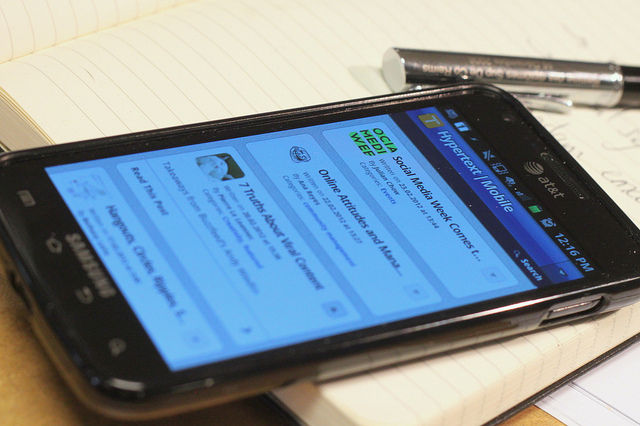When it comes to any school of thought surrounding a new concept – there comes a point when there is a body of “accepted knowledge”. That body of knowledge then becomes sacrosanct and instead of being treated as a guide to inform our work – it becomes practical dogma. It is worth challenging such myths and seeking to explore beneath the surface of the dogma to get at the truth beneath; so that we can develop better user experiences even when we fly in the face of “what everybody knows”.
Josh Clark, the designer and developer, reported in Forbes and The Next Web, has proposed that we take a closer look at mobile design and development and pick at the myths that have grown up to surround it. It’s not that there’s no truth in these ideas but rather that being over-reliant on them without thinking can lead to overly-simplified too-dumbed down experiences that users don’t enjoy.
So let’s take a look at Josh’s myths and what we ought to do about them:
Mobile Users are Always Rushed and Distracted

Author/Copyright holder: Mister G.C. Copyright terms and licence: CC BY-NC-ND 2.
Sure, there are times when this is true; when you’re dashing between meetings or dealing with something on a smoke break but there also plenty of times when it’s not true. People play with their phones while they’re eating, when they’re chilling back on the sofa at home, in airport loungers, etc.
There are many times when it’s not a rushed, distracted use of the mobile internet but rather we’re just plain bored. This means that not every interaction with your mobile app or site needs to be over in a second. You need to spend some time looking at how your users will use your apps and then provide the right experience for them.
Mobile Apps and Websites Must be Lite Experiences
Sure, there’s less screen real estate to play with but Josh challenges the idea that this means we automatically need to cut down on the overall experience. Instead, he offers, that we should attempt to preserve the experience in different ways. In the same way that we don’t remove indexes, contents tables and chapter headings when we change a book from a large hardback to a small paperback.
Complexity is a Bad Idea for Mobile

Author/Copyright holder: Mark Skipper. Copyright terms and licence: CC BY 2.0
This isn’t the case. What we should be careful of is creating complicated designs but there are plenty of mobile apps which deliver plenty of complexity (and do so well) without compromising the user experience. The key is to learn to manage complexity within the design so that it never feels complicated at any one stage.
Too Many Taps Can Spoil the Broth
Josh says that designers need to think about the quality delivered with each tap rather than worrying about the quantity of taps involved. With mobile if a tap can deliver a single “big idea” rather than relying on the app as a whole to deliver it; this can enhance the user experience and allow the designer to manage complexity and deliver a better more usable product.
You Need a Mobile Website!

Author/Copyright holder: Text100. Copyright terms and licence: CC BY-NC-ND 2.0
Maybe you do, maybe you don’t. The truth is that mobile should be an excuse for designers to examine the experience on every platform that they support. Then you should look at how each platform can be used to better the overall user experience.
It’s not about creating multiple websites but rather what’s the end result? Does your mobile site really need to be a slimmed down version of the desktop one? Or could the desktop one be trimmed too because it’s full of fat and things that interfere with, rather than enhance, the user experience?
Mobile Apps are Better than Mobile Websites!
Really? This seems short-term in the extreme. Are users really going to download, install and manage an app for every company that they interact with? The app market may be growing but there’s a growing feeling that users can’t wade through 700 new releases a day and that it might be better for developers to refocus on mobile websites.
Content and API Belong to the Database Folks
We’re not sure how pervasive this myth is. In fact, we’d like to assert that UX designers know that they’re supposed to get involved in more than just the look and feel of products. Mobile is different because it gives us cameras, GPS, etc. to play with and UX designers should know this already. But if you don’t, Josh would like to reinforce that you need to get involved with all the good stuff that this platform offers.
The Take Away
These myths as proposed by Josh aren’t completely without founding but they can limit the way that we approach design for mobile. It’s vital to think about the overall user experience and design for that – rather than blindly following a list of “must do” items for fear of stepping outside of someone else’s (possibly mistaken) comfort zone. Your users will thank you for it.
References & Where to Learn More:
See how Josh Clark debunks the 7 Myths of Mobile Web Design.
And what he had to say to Forbes magazine on the same subject.
A slightly different look at these ideas can be found at Versio2’s site here.
Hero Image: Author/Copyright holder: Josh Clark. Copyright terms and licence: Fair Use.











